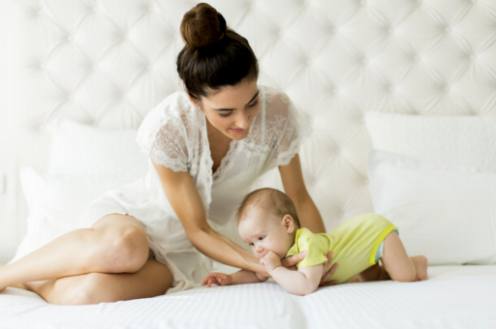Welcoming a new baby into the world is an exciting and joyous time for new parents, but it also comes with its fair share of challenges, particularly when it comes to sleep. Newborns have erratic sleep patterns and often struggle to settle into a regular sleep routine. It's essential for parents to create a sleep-conducive environment to ensure that their little ones get the rest they need for optimal growth and development. From setting up the perfect sleep space to choosing the right bedding and sleepwear, there are several key essentials to consider for creating a peaceful and restful environment for your newborn.

Understanding Newborn Sleep Patterns and Needs
Newborns have very different sleep patterns and needs compared to older children and adults. Newborn babies typically sleep for short periods of time, often only a few hours at a stretch. They have not yet developed a regular circadian rhythm, which means they may sleep and wake at unpredictable times throughout the day and night. It's important for new parents to understand and adjust to their newborn's unique sleep patterns in order to provide them with the rest they need to grow and thrive. Additionally, newborns have specific sleep needs in terms of a safe and comfortable sleep environment, which will be addressed further in this article.
Setting Up the Perfect Sleep Space
Setting up the perfect sleep space for your newborn is crucial for promoting restful nights. A comfortable and safe sleep environment is essential for your baby's well-being. When it comes to setting up the perfect sleep space, there are a few key factors to consider. The crib or bassinet should be placed in a quiet and dimly lit area of the room, away from any drafts or direct sunlight. It's important to ensure that the sleep space is free of any potential hazards such as loose bedding, pillows, or stuffed animals. A firm and snug-fitting mattress is also essential for your baby's safety. Additionally, using a sleep sack or wearable blanket can help keep your baby warm and cozy without the risk of loose bedding. By carefully crafting the perfect sleep space for your newborn, you can help create a conducive environment for restful nights.
Choosing the Right Bedding and Sleepwear
When it comes to choosing the right bedding and sleepwear for your newborn, there are a few key considerations to keep in mind. Firstly, it is important to opt for bedding and sleepwear that is made from soft and breathable materials, such as cotton, to ensure your baby stays comfortable throughout the night. Additionally, it is best to avoid loose bedding, such as blankets and pillows, as these can pose a suffocation hazard for young infants. Instead, consider using sleep sacks or swaddles to keep your baby snug and secure while they sleep. Finally, when selecting sleepwear for your newborn, it is important to dress them in clothing that will keep them at a comfortable temperature throughout the night, whether that be a onesie or lightweight pajamas. By choosing the right bedding and sleepwear for your newborn, you can help to create a safe and comfortable sleep environment for them to thrive in.
Managing Light and Noise for Optimal Sleep
One of the key factors in creating a sleep-conducive environment for your newborn is managing light and noise. Newborns are sensitive to light and sound, and these can significantly impact their ability to sleep well. To ensure optimal sleep for your baby, it's important to minimize both light and noise in their sleep space.
When it comes to light, it's essential to create a dark environment for your baby to sleep in. This means using blackout curtains or shades to block out any natural or artificial light that could disrupt their sleep. It's also important to keep any night lights or other sources of light to a minimum, as even small amounts of light can interfere with your baby's ability to fall and stay asleep.
In terms of noise, it's important to reduce any potential disturbances that could wake your baby during their sleep. This could involve using white noise machines or fans to mask any outside sounds, as well as being mindful of the noise level in your home during your baby's sleep times. By managing light and noise effectively, you can help create a peaceful and restful sleep environment for your newborn.
Temperature Control in Your Newborn's Room
One of the key factors in creating a sleep-conducive environment for your newborn is ensuring that the temperature in their room is just right. Newborns are particularly sensitive to temperature and may have difficulty regulating their own body heat, so it's important to keep their room at a comfortable and safe temperature. Ideally, the room should be kept between 68-72 degrees Fahrenheit to provide a comfortable sleeping environment for your baby. It's also important to dress your baby in appropriate sleepwear to ensure they are not too hot or too cold during the night. By maintaining a comfortable temperature in your newborn's room, you can help promote restful and peaceful nights for both your baby and yourself.
Establishing a Soothing Bedtime Routine
Establishing a soothing bedtime routine is essential for helping your newborn develop healthy sleep habits. A consistent bedtime routine can signal to your baby that it's time to wind down and prepare for sleep. This routine can include gentle activities such as a warm bath, gentle massage, and quiet time with a bedtime story or lullaby. By establishing a predictable routine, you can help your newborn feel secure and relaxed, making it easier for them to settle down for the night.
